Dihua Sewage Treatment Plant Introduction
Being the largest Class-2 sewage treatment plant in Taiwan, the operations of the Dihua Sewage Treatment Plant started in 2006 on its completion. Daily capacity can be as high as 500,000CMD; and after its commencement, the water quality of the Tamsui River has turned from medium to low polluted from the original heavily polluted. The Dihua Sewage Treatment Plant employs a double-layer clarifier design (which is the first in Taiwan) and a deep chamber staged aeration Class-2 biological treatment procedure; a semi-underground design concept is used for the entire plant for preventing dispersion of odors generated by sewage treatment; and an additional Class-3 recycling facility is installed for supplying water to in-plant facilities and toilets as well as to the public for plant irrigation use, street washdowns, and so on. Dihua Sewage Treatment Plant Main Treatment Facilities List Address of Dihua Sewage Treatment Plant: No. 235, Jiuquan Street, Datong District, Taipei City. Certified as an “Environment Education Facility” on March 25th 2004 by EPA, the very first urban sewage education locality in Taiwan. “Water Protection, Culture and Industry” are 3 aspects of environmental education courses promoted by the Dihua Sewage Treatment Plant addressing different groups: primary school students, junior-high students, and the general public (including high school students); courses include contents regarding sewage treatment education: “New Dress for Sewage Baby” and “Knowing Sewage Treatment System;” “Tales of Water Babies,” “The encounter between Nature and Culture” that link with the local culture and public arts; legacy carved in Taipei residents’ hearts – Tamsui River anecdote that accompanied their growth are also included in “The place we grew up,” “Water Stories of Taipei;” together with some hands-on activities, the course becomes more colorful and vivid. Each 2-hour course may accommodate 25 people. Reservation is open 9:00-17:00 on normal days (Monday through Friday). On-line reservation is prioritized for citizens and entities. Website: https://service.gov.taipei/rental/VenueDetail/e1fabfea2753. People may query for detains via Fax: 2596-4463, letter, or telephone (02-25973183 extension 871). Courses are introduced as follows: Sewage treatment is an unfamiliar realm to the general audience; via visitation to a sewage treatment plant participants may learn how does sewage come about and why a sewage treatment plant is necessary for treating domestic sewage so that impact to the environment can be minimized; they may also realize only via water conservation and re-use of recycled water can we achieve sustained operations of water resources. Furthermore, games that combine with process activities, pH value test and sludge sedimentation test (SV30) may also enable participants to have preliminary understanding in sewage treatment technologies; via observing the treated wastewater, one may also realize the importance of sewage treatment plants. Sludge Sedimentation (SV30) Test pH Test Toilet paper and other paper dissolution test This course aims to give an understanding of coexistence of human and environment via public arts at the Dihua Sewage Treatment Plant and to learn to appreciate man-made beauties; by introducing “The Esthetics of Contacts,” “Hearing the Water” and “Ground Revelation,” students may understand the origin of sewage and the process for its treatment and return to the nature. Explaining river pollution indices and comparing past and current pollution conditions of the Tamsui River by actually visiting the waterfront and the effluent location, students are enabled to understand the necessity of a sewage treatment plant. Public Art – The beauty of contacts This course aims to enable students to further understand the sewage life cycle; props like toilet, piping and septic tanks are used for interpreting improvements in sewerage systems. Hands-on activities in [Knowing Sewage Treatment System] allow students understand the process of sewage collection in systems near their home vicinities. By viewing a video of sewage treatment plant and model explanations, students can finally understand by oral guidance the relationship between sewage and the environment, and the pros and cons for the existence of sewage treatment plants. We eagerly expect schools, groups and communities cooperate with the Dihua Sewage Treatment Plant for promoting environmental education relevant activities and participating in the planning of courses to combine local water resources with historical and cultural resources as well as communities, schools and institutions for jointly developing environment education courses. The Dihua Sewage Treatment Plan was certified with the EPA Carbon Footprint Emblem on 2019.12.24, manifesting its endeavors for environment protection and carbon reduction; the next goal will be set on a Carbon Reduction Emblem.
Sewage Treatment Procedures: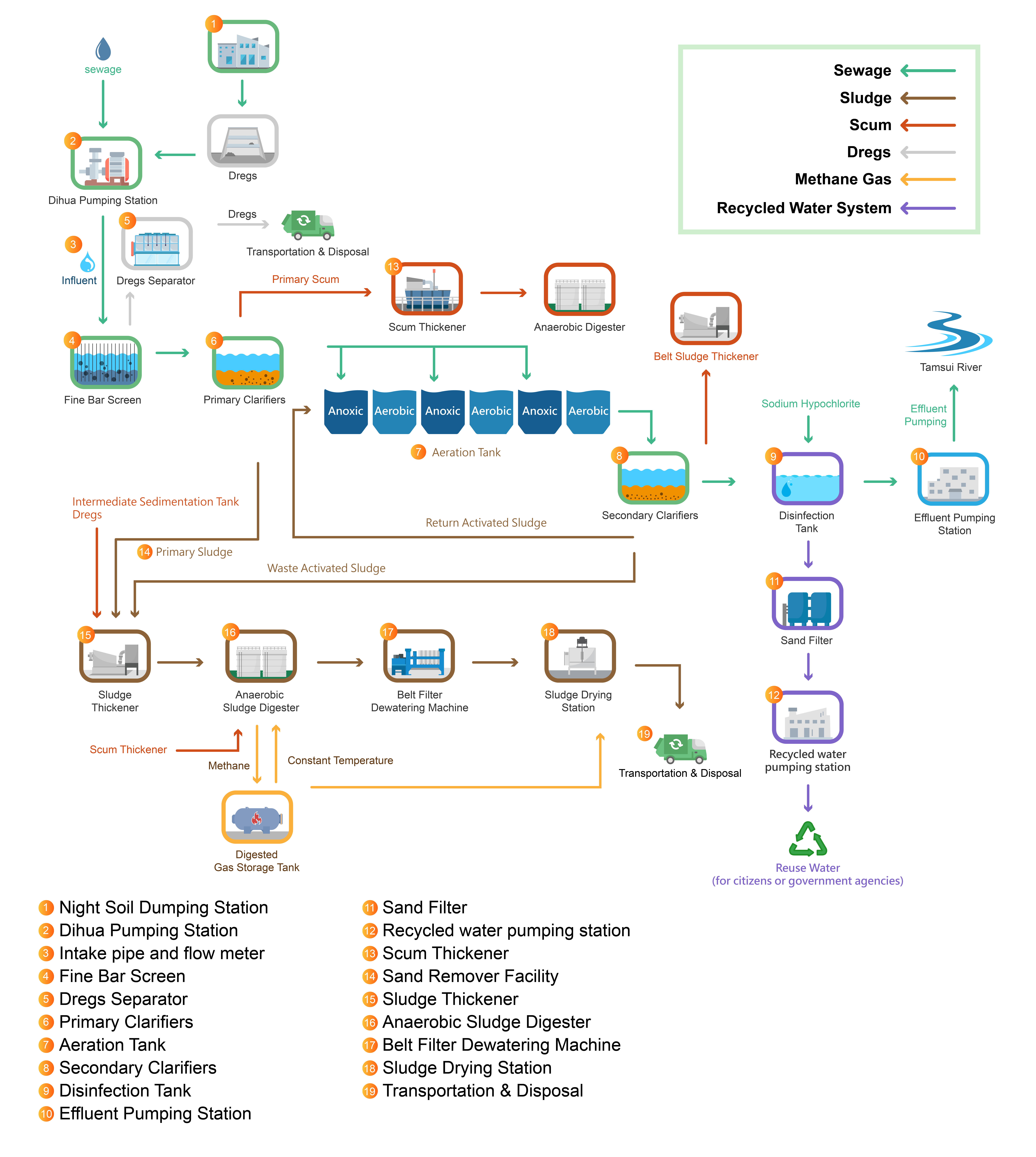
Item Facility Name Quantity Brief Description 4 levels above ground, L 90m, W 27m, H 20m Rotation type, W 2.0m, H 3.5m, pitch 6mm 2-layer structure (upper layer L 24.25m, Lower layer L 32m), W 5.8m, both layers D 3m/ Metal Chain Deep chamber staged aerator, L 63.3m, W 27m, D 10m, 3-stage anaerobic zoning (fungi selection) and 3-stage zoning, stirred with aerator; additional degas chamber, L 27m, W 4.5m, D 5.35m 2-layer structure (upper layer L 37.35m, Lower layer L 40.35m), W 6m, both layers D 5m/ Metal Chain Add sodium hypochlorite for disinfection; each L 48.02m, W 11.55, average D 8.0m Vertical centrifugal pump (500HP), Wet Well L 90m, W 27m, above ground H 20m 4 levels above ground, L 55m, W 28m, H 24m 4 levels above ground, L 55m, W 28m, H 24m Belt filter, Belt W 2~2.5m Round structure, Dia. 37.5m, average rim depth 10.5m Blader type, Dia. 24.0m, Rim height 10.5m L 37.5m, W 22.3m, H 16.5m 3 levels above ground, L 33.4m, W 26.3m, H 11.0m 3 levels above ground, L 43.2m, W 17.05m, H 18.53m Total sludge treatment=140 t/day, water content in dried sludge<10% 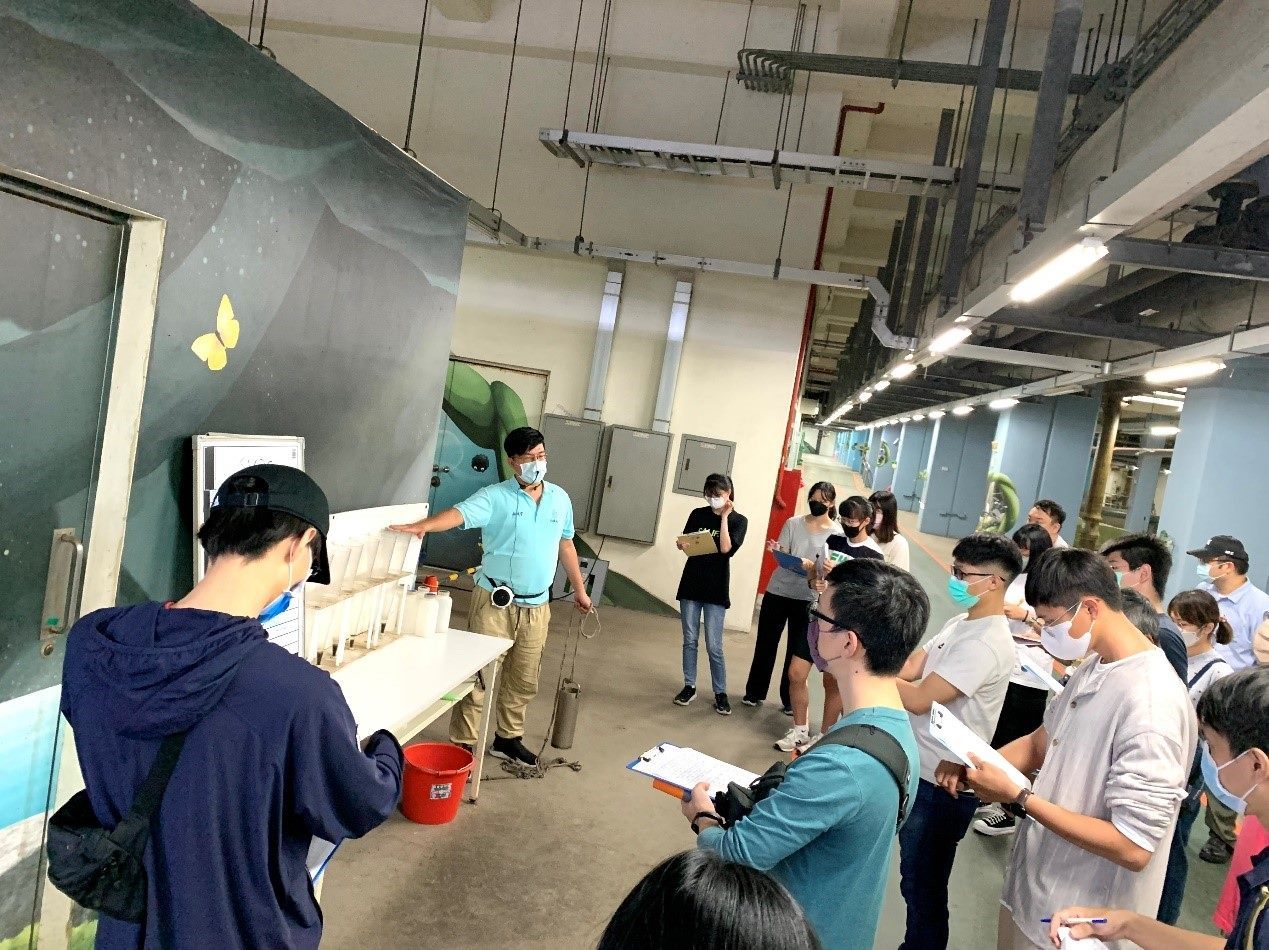
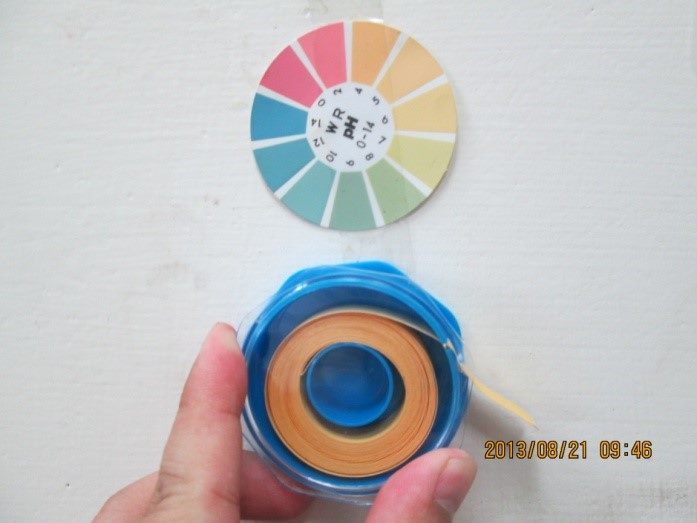
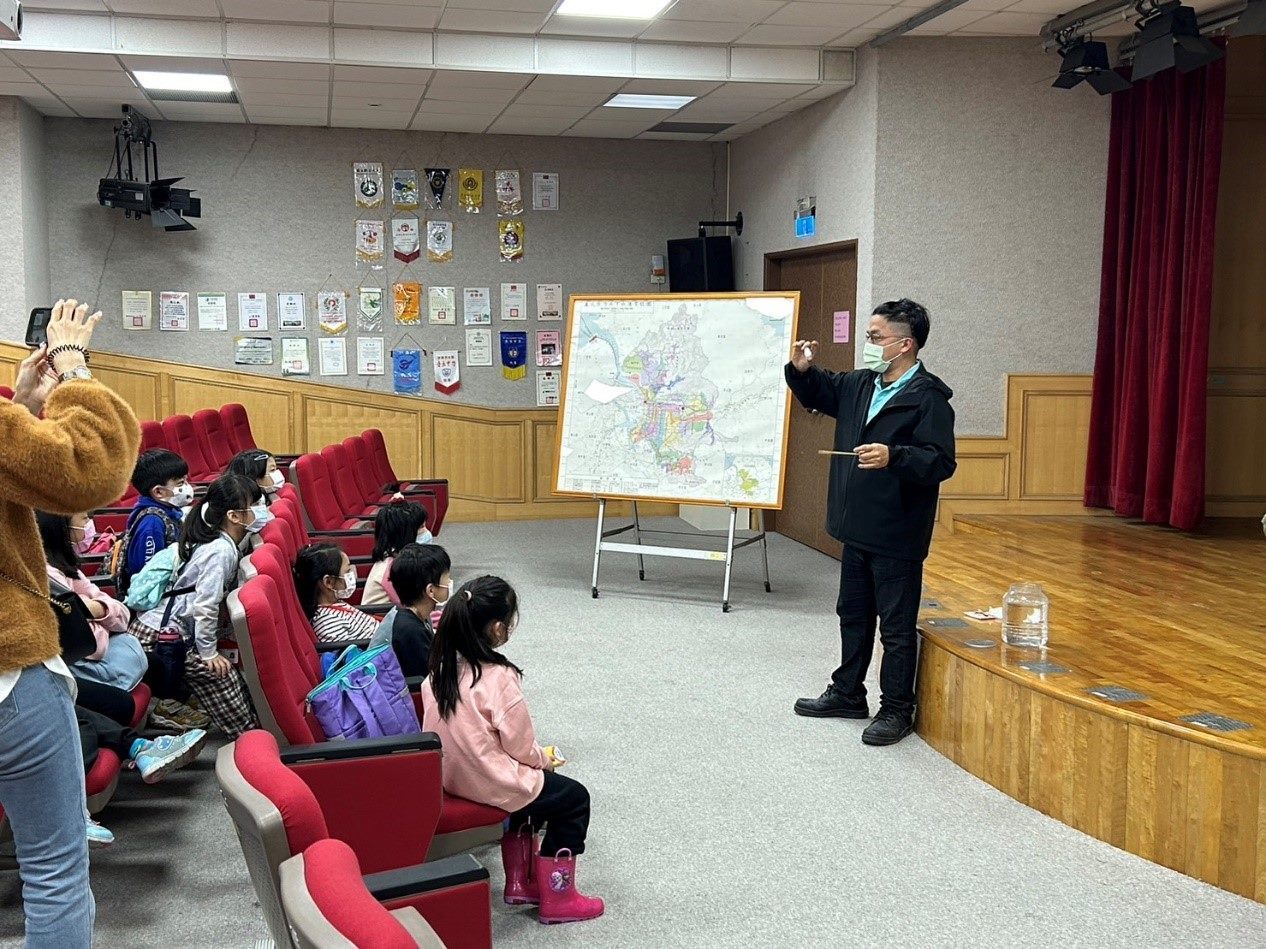
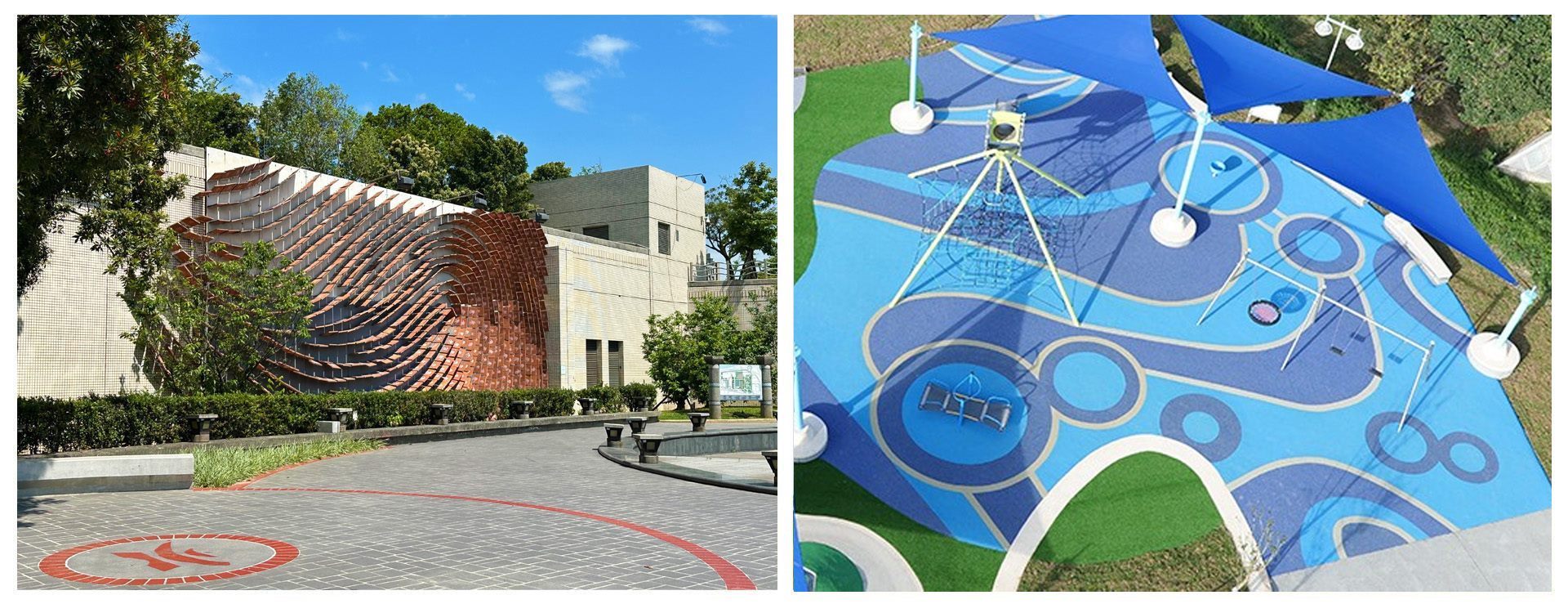
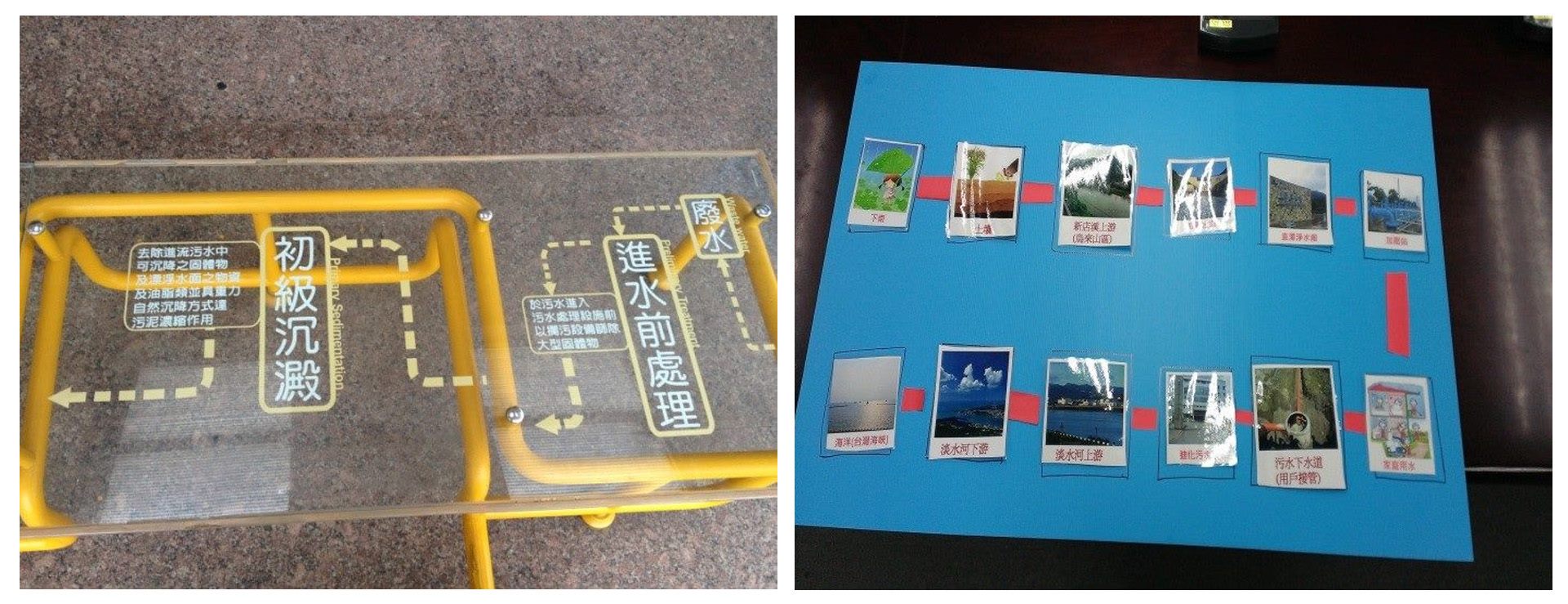
(III) [The place we grew up] and [Water Stories of Taipei]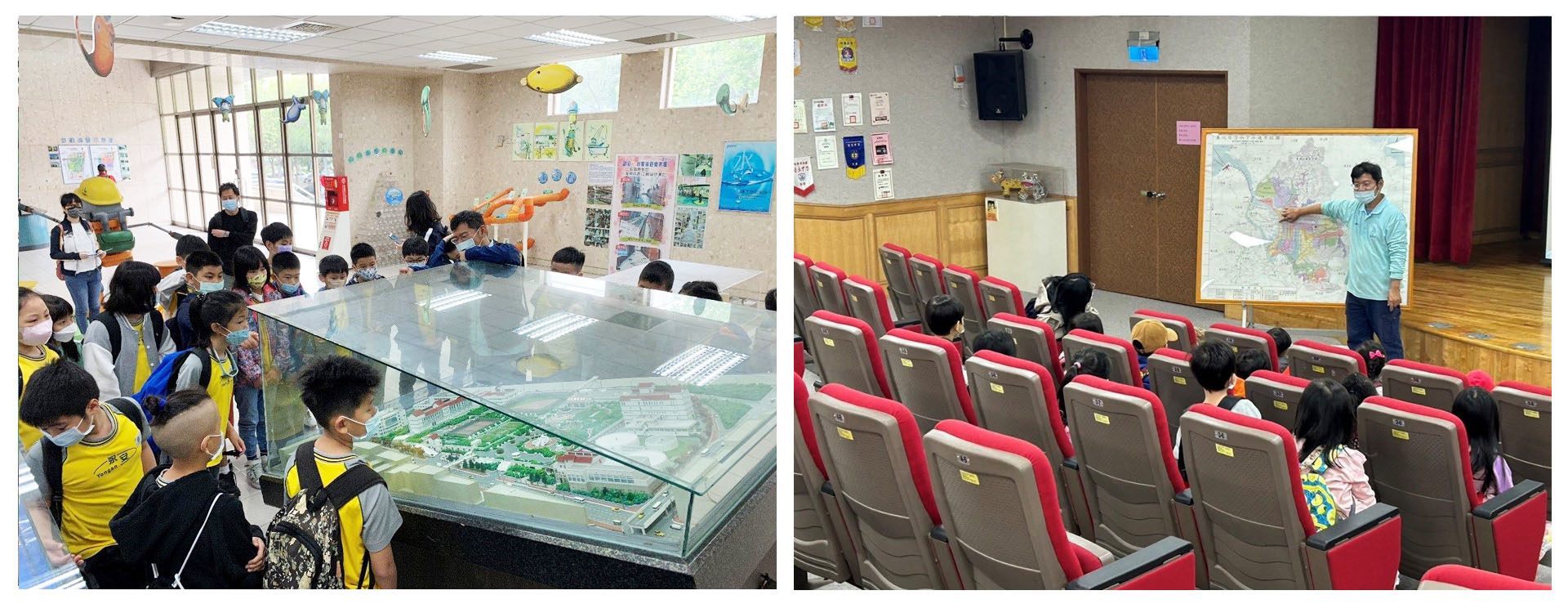



![Taiwan.gov.tw [ open a new window]](/images/egov.png)
